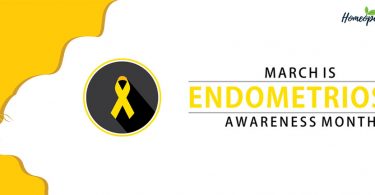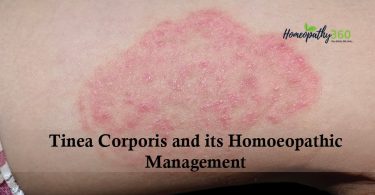
Abstract
Fever is a most common symptom occurring in many disease conditions and producing significant suffering to patients. This study evaluates the efficacy of biochemic medicines in managing fever, focusing on their potential to alleviate symptoms and promote recovery with minimal side effects, and overcome the myth that homoeopathy cannot manage acute conditions like fever. The research included a clinical analysis of patients presenting with febrile conditions, comparing outcomes between those treated with biochemic medicines and conventional antipyretics.
Keywords
Biochemic medicine, homoeopathy, effectiveness, fever, acute conditions
Introduction
Fever is a common symptom of various infectious and inflammatory conditions. It is the body’s natural response to infection or disease, signaling the activation of the immune system.
In modern medicine, primarily focus on managing the fever with antipyretics or antibiotics, which suppress the body’s normal immune response.
According to Hahnemanian guidelines, the true homoeopathic remedies are not administered in the active febrile stage because the medicinal action coincides with the natural recurrence of the disease and causes a violent reaction and great loss of strength. Alternative medical systems like biochemic medicine offer a safe and curative approach in such types of cases.
Biochemic system of medicine, developed by Dr. Wilhelm Heinrich Schuessler, is a form of alternative medicine based on the idea that diseases result from an imbalance of inorganic mineral salts in the body. In these mineral salts are used in the form of remedies, which restore balance at the cellular level and aid the body in overcoming disease.
Subject of Introduction
Body temperature is regulated by Hypothalamus by temperature regulating center, which sets the body temperature in normal physiological conditions is 370 C. when human body come to contact in any infectious or harmful substance that activate the immune system which leads to activate immune cells like neutrophils, monocytes, lymphocytes, macrophages, NK cells and mast cells that produce cytokines such as TNF, IL-1, IL-6 and interferon-alpha, that stimulate the production of prostaglandin E2(PGE2). PGE2 acts as a primary mediator and binds to EP3 receptors in the preoptic area of hypothalamus. Activation of EP3 receptors leads to physiological responses that increase core body temperature, such as peripheral vasoconstriction and increased metabolic heat production and decrease heat loss by skin.
Classification of Fever
Fever is classified into three categories:
- Low-grade fever: 100.4 to 102.20F (38 to 390C)
- Moderate-grade fever: 102.2 to 1040F (39 to 400C)
- High-grade fever: 104 to 107.60F (40 to 420C)
- Hyperpyrexia > 107.60F(420C)
During a fever, the body undergoes significant physiological changes that lead to alteration in mineral balance like sodium, potassium, calcium, magnesium, iron and zinc due to increased metabolic activity and immune responses that produce various signs and symptoms.
Signs and symptoms of fever
Signs and symptoms depend upon the cause of fever:
- Headache
- Sweating
- Shivering
- Muscle pain
- Dehydration
- Loss of appetite
- General weakness
Hyperpyrexia may result in:
- Confusion
- Hallucinations
- Irritability
- Convulsions
Biochemic medicine, also known as Schuessler’s tissue salts or cell salts, works on the principle that the human body’s cells require a precise balance of inorganic mineral salts to function properly. This therapeutic approach posits that imbalance or deficiency in these essential minerals can disrupt cellular function, leading to illness. By administering these mineral salts in highly diluted form, restore cellular balance and promote natural healing processes.
Mechanism of Action
- Cellular Nutrition: The body comprises various inorganic minerals salts, such as calcium, potassium, magnesium, sodium, iron and silica, which are vital for maintaining healthy nutrient assimilation, waste elimination, and overall cellular metabolism. A deficiency or imbalance in any of these salts can impair these processes, leading to disease.
- Restoration of Balance: Biochemic remedies are prepared by triturating these mineral salts to a low potency, typically 3x, 6x, 12x, making them easily absorbable by the body’s cells. When administered, these remedies aim to replenish the deficient minerals, thereby restoring the natural balance within the cells.
- Stimulation of Self-Healing: By correcting mineral deficiencies at the cellular level and the remedies are highly diluted, they work by stimulating the body’s own healing processes rather than directly treating the infection.
This approach aligns with the concept that providing cells with the necessary nutrients enables the body to heal itself without the need for more invasive interventions.
Medicine Specification
- Ferrum Phosphoricum
All febrile disturbances and in inflammatory and congestive disease at the beginning, especially before exudation has commenced. Reduce inflammation and promote oxygenation of tissues. The principal accompaniments of these conditions manifested by flushed face, fever with full pulse, hot, dry skin, thirst, pain and redness of part. Chill every day at 1:00 PM. Symptoms calling for this remedy are always aggravated by motion and ameliorated by cold. It stands midway between the intensity of Aconite and Belladonna and the dullness of Gelsemium.
NOTE: Do not use this remedy below 12x at night, because it produces sleeplessness.
DOSE: 6x or 12x potency, take 4 tablets every 3-4 hours until improvement.
- Kali Muriaticum
It follows well to Ferrum phos. in inflammatory disorders. Indicated in the second stage of inflammation of serous membranes when the exudation white or gray and plastic or fibrinous. The general characteristics are a white or gray coating at the base of the tongue. Catarrhal fever, great chillness, the least cold air chills him through, has to sit close to the fire to keep warm. Better covered up in bed. Complaints aggravated by motion, eating rich and fatty food and ameliorated by hot application & drinks.
DOSE: 6x or 12x potency, 4 tablets 3-4 times daily.
- Kali Sulphuricum
It promotes perspiration when Ferrum phos. is fails. Often follows well and completes a cure commenced by Kali Mur. Indicated in the third stage of inflammation and stage of retrogression. Increase oxidation of tissue. Fever with yellow, slimy, coated tongue. All discharges are yellowish, sticky and watery. Temperature rises in the evening until midnight, then falls again. Pulse quickly with throbbing and pulsation all over the body. Thirstlessness. Complaints aggravated in the evening, heated room and amelioration by cool, open air.
DOSE: 6x or 12x potency, 4 tablets at a time and repeat frequently.
- Natrum Muriaticum
Intermittent fever after abuse of quinine, living in damp regions, or newly turned ground. Fever with chill, excessive sweating, dehydration and drowsiness. Different portions of the body feel cold, spine, stomach, hands, feet, etc. Chilly and thirsty at same time. Chill from morning till noon, about 10 A.M., preceded by intense itching, heat with thirst, sour sweat and weakening, much backache and throbbing headache, great languor, emaciation, sallow complexion and fever-blisters on the lips. Profuse perspiration, also night-sweats. Regulate the osmotic tension in the organism, and keep blood serum at a uniform specific gravity. Catarrhal of all mucous membranes, with secretions of transparent, watery, coarse, frothy mucus. The tongue has a clean, shiny appearance, or small bubbles of frothy saliva on its sides. Worse in the morning, periodically, at the seaside and in cold weather.
DOSE: Typically taken in low potency, 3-4 tablets 2-3 times daily.
- Calcarea Phosphorica
Chronic intermittent fever in scrofulous children, who suffer from slow development, defective nutrition of bone, faulty secondary assimilation and dentition trouble. Restorative power after acute diseases, by rebuilding and strengthening tissues. Creeping shivering. Copious night sweats in phthisis. Cold sweat appears on the face and coldness of the body. Cold goes through the entire body. Albuminous mucus discharges. General lack of vital heat, sensitive to cold. Complaints aggravated by cold, change of weather, from getting wet and ameliorated by lying down and resting.
DOSE: 6x or 12x potency, 4 tablets 3-4 times daily.
References
- K Sembulingam and Prema Sembulingam. Essentials of medical physiology. 8th edition. New Delhi: Jaypee Brothers Medical Publishers (P) Ltd; c2019
- Davidson S. Davidson’s principles and practice of medicine. 21th edition. U.K.: Churchill Livingstone Elvister; c2010.
- B.K.Sarkar. Hahnemann’s organon of medicine. 9th edition. Birla publications; New Delhi.
- Boericke & Dewey. The 12 tissue remedies of schussler. B. Jain publishers (P) Ltd; Noida; c2015.
Acknowledgement
I would like to express my deepest and heartfelt gratitude to my mentor, philosopher, and teacher Dr. Roni Dudhwala (M.D. Homoeopath), for their unwavering support and encouragement. Their belief in my potential, at a time when no one else could, has been a profound source of strength for me. Your unwavering faith and kindness not only helped me overcome the darkest phase of my life but also enabled me to rediscover my true potential and the purpose of my life. I am forever indebted to you for your guidance and inspiration.
Author’s Detail
Poonam Rajubhai Rachhadiya (B.H.M.S. Intern)
- S. Agrawal Homoeopathic Medical College, Navsari.





